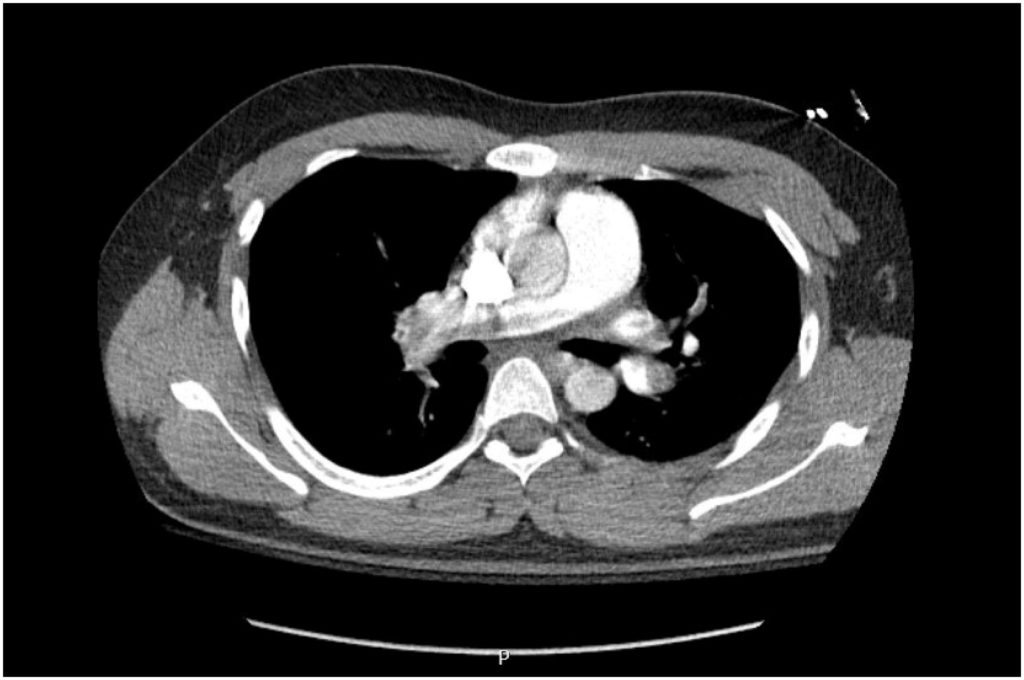High blood pressure or hypertension may harm the body for years before it causes symptoms. Uncontrolled high blood pressure can increase the risk of disability, myocardial infections, kidney disease, stroke, and even heart attack.
Early treatment and lifestyle changes can help manage the condition and reduce the risk of developing life-threatening complications.
Blood Clots
Blood clots are one of the most prevalent health issues linked with high blood pressure. Blood clots often help to stop excessive bleeding. But when they form when they’re not required, they can cause severe health problems, including stroke and heart attack.
Blood clots develop in the body unnecessarily when blood flow gets disrupted. If blood pools form in one of your blood vessels or heart, chances are the platelets will clamp together. There are two common conditions linked with slow blood flow, which cause blood clotting issues. They include:
Understanding Pulmonary Embolism
Pulmonary Embolism (PE) is the sudden blockage of the pulmonary arteries in the lungs. It occurs mainly because of thrombosis (A blood clot in the legs). Although thrombosis is usually limited to the legs, it can also originate from deep veins in various body parts. This is known as deep vein thrombosis.
Embolism is a type of blockage caused by an embolus. An embolus is when a blood clot forms in one portion of the body, detaches, and travels to another area of the body. In a case where embolus develops in a blood vessel, it blocks the continuous and smooth blood flow to various organs.
So, how does blood clotting occur? Let’s start with the basics. The body’s circulatory system comprises the veins, capillaries, arteries, and heart. Blood gets sent down the arteries through tiny blood vessels called the capillaries to the lungs to pick oxygen.
Blood later flows to various body parts and goes back to the heart through pulmonary veins. But as the blood flows through the veins to the heart, it might slow down. This slow down can cause blood pooling, leading to blood clot formation.
Causes of Pulmonary Embolism
Normal blood coagulation is an effective method of controlling bleeding. The human body makes and breaks blood clots. However, there are some instances when the body cannot go about with this process. In such cases, the patient may suffer severe health problems.
As said earlier, a blood clot may form as a result of slowed-down blood flow in a deep vein due to an abnormality or injury to the blood vessel. But most often venous clots form in deep veins of the legs. This condition is called DVT, or deep vein thrombosis. If the formed clot breaks off, chances are it will travel to different body parts, but more often the lungs.
Besides that, there are other lesser causes of embolism. They include:
- Fat embolus, which is more associated with a broken large bone
- Air bubbles
- Amniotic fluid embolus
- Deep vein thrombosis on the upper body
Sometimes the clots can form at the end of an indwelling intravenous (IV) catheter, detach, and move to the lungs.
Who is Likely to Suffer from Pulmonary Embolism?
Below are possible factors for pulmonary embolism:
- A family history of pulmonary embolism
- Injury or Orthopedic Surgery
- Scenarios leading to limited mobility including taking long flights, paralysis, prolonged bed rest, etc.
- Individuals undergoing cancer treatment
- People with medical conditions such as chronic obstructive pulmonary disease, stroke, inflammatory bowel conditions, and heart failure.
- Individuals using certain medicines, like estrogen replacement and birth control pills
- People suffering from obesity
- Old age
Signs and Symptoms of Pulmonary Embolism
There are various symptoms to look for in pulmonary embolism. But keep in mind the signs and symptoms might defer from one individual to another. The commons symptoms of pulmonary embolism include:
- Falling short of breath,
- Chronic chest pain with breathing
- Lightheadedness, dizziness, and fainting feeling
- Frequently experiencing an irregular heartbeat
- Palpitations (heart racing)
- Instances where one coughs blood
- Heavy sweating, more so during the night
- Low blood pressure
Pulmonary Embolism Treatment
Some of the common treated methods of pulmonary embolism include:
- Anticoagulants
These medicines are used to treat blood clots and reduce blood’s ability to clot. This helps prevent a clot from growing larger and new clots from forming by lowering the blood clotting capacity. Warfarin and heparin are two examples of anticoagulants.
- Fibrinolytic Therapy
Fibrinolytic are drugs designed to dissolve blood clots. Also known as clot busters, these drugs get administered intravenously to break blood clots. However, they’re only used in a life-or-death situation.
- Vena Cava Filter
The filter is a tiny metal device inserted in the vena cava, a vast blood vessel that takes deoxygenated blood back to the heart. The filter prevents blood clots from flowing into the patient’s lungs.
Vena Cover filters are great alternatives for individuals unable to take anticoagulant medication for one reason or another. Also, they can be used by individuals experiencing bleeding problems caused by anticoagulation medicines.
- Pulmonary Embolectomy
Pulmonary embolectomy is the last solution when the above treatment fails. Your doctor will only consider it if you’re not responding well to thrombolytic therapy or anticoagulation medication, or your condition is unstable. The treatment involves removing the pulmonary artery.
Preventive therapy is critical in pulmonary embolism treatment since it discourages the formation of embolisms.

